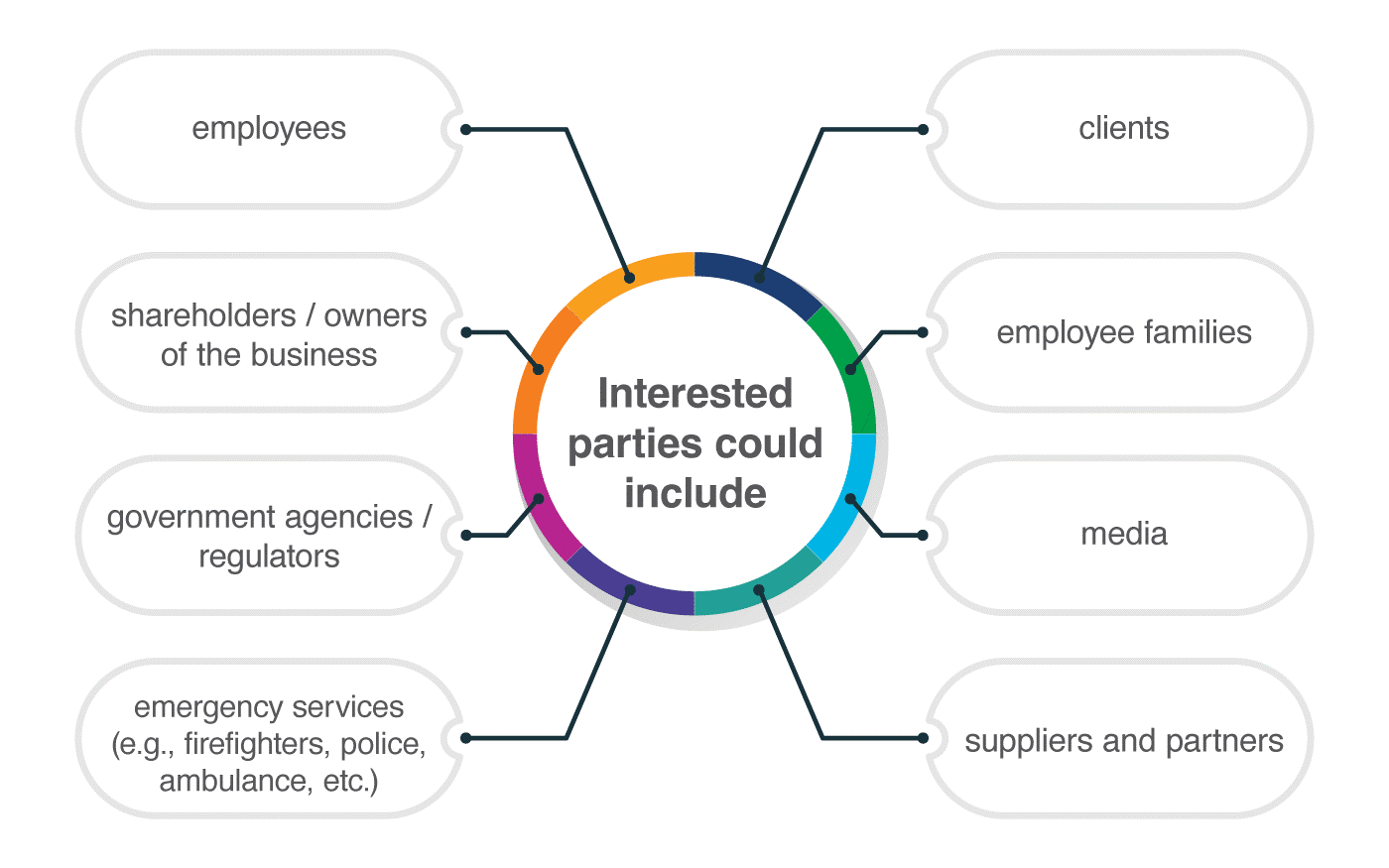Updated: November 17, 2022.
One of the hot questions these days is related to clause 4.2 in both ISO 27001 and ISO 22301 – Understanding the needs and expectations of interested parties. Actually, their identification is not so complicated, and it gives crucial input for developing your information security management system (ISMS) or business continuity management system (BCMS). In this article, find the definition for interested party and examples of ISO 27001 interested parties.
An interested party is a stakeholder, i.e., a person or organization that can influence your information security/business continuity, or a person or organization that can be affected by your information security or business continuity activities. It could be employees, employee families, shareholders/owners of the business, government agencies/regulators, emergency services, clients, media, suppliers, and partners.
Examples of interested parties?
Let’s start with understanding what interested parties are – they are nothing else but stakeholders, i.e., persons or organizations that can influence your information security / business continuity, or persons or organizations that can be affected by your information security or business continuity activities.
So, typically, interested parties could include:
- employees
- shareholders/owners of the business
- government agencies/regulators
- emergency services (e.g., firefighters, police, ambulance, etc.)
- clients
- employee families
- media
- suppliers and partners
… and, of course, anyone else that you consider important for your business.
How can you identify them? Just ask your top executives, as well as heads of departments about who is important for their business, and then assess whether they could be interested in your information security or business continuity. Also, chances are that your existing documentation (e.g., business plans) already contains such information.
Why are these interested parties important?
Now that we know the definition of an interested party, let’s see more about their importance. The identification of interested parties is not as important as the second step: identification of their requirements. Here’s why it is important: you need to know what all the interested parties want from you, and you need to figure out how to satisfy all these requirements in your ISMS / BCMS.
For example, shareholders want the security of investment and a good return, clients want you to comply with security clauses in the contracts you signed with them, government agencies want you to comply with information security/business continuity laws and regulations, the media want quick and accurate news related to your incidents, etc. However, you have to be more specific than this – you have to specify exactly which laws and regulations, which security or continuity clauses exist in the contracts, and so on.
The best way to collect this information is to study their written requirements (legislation, contracts, etc.) and/or interview their representatives. (Here you’ll find a list of information security and business continuity laws and regulations.)
Once you have all this information, you will need to “configure” your information security or business continuity to be compliant with your stakeholder expectations – this means you’ll have to identify the requirements before you start developing the details of your ISMS or BCMS.
How is this done?
Besides understanding the definition of an interested party, good practice is to write a procedure that defines who is in charge of identifying all the interested parties and their legal, regulatory, contractual and other requirements and interests; such a procedure also needs to define who is in charge of updating this information and how often this is done.
Here is one example of an ISO 27001 interested party. If you work in a larger organization, such organizations usually have compliance departments or compliance officers – they would be the most natural department/person to do this kind of a job. If not, you can try to negotiate whether your legal department could do this job – if not them, then you, the information security or business continuity coordinator, will have to do it yourself.
Once the requirements are clearly identified, you need to define who is in charge of complying with them – these responsibilities could be very different: IT department would be in charge of complying with technical requirements, human resources department for, e.g., confidentiality statements, information security coordinator with new policies and procedures, etc.
So, the point is – if you didn’t identify all these stakeholders and their requirements, you would be in danger of falling short of their expectations. And not satisfying your shareholders, or a government agency, could be quite dangerous.
To see how to implement ISO 27001 through a step-by-step wizard, and eliminate most of the manual work through automation, sign up for a free trial of Conformio, the leading ISO 27001 compliance software.


 Dejan Kosutic
Dejan Kosutic 






